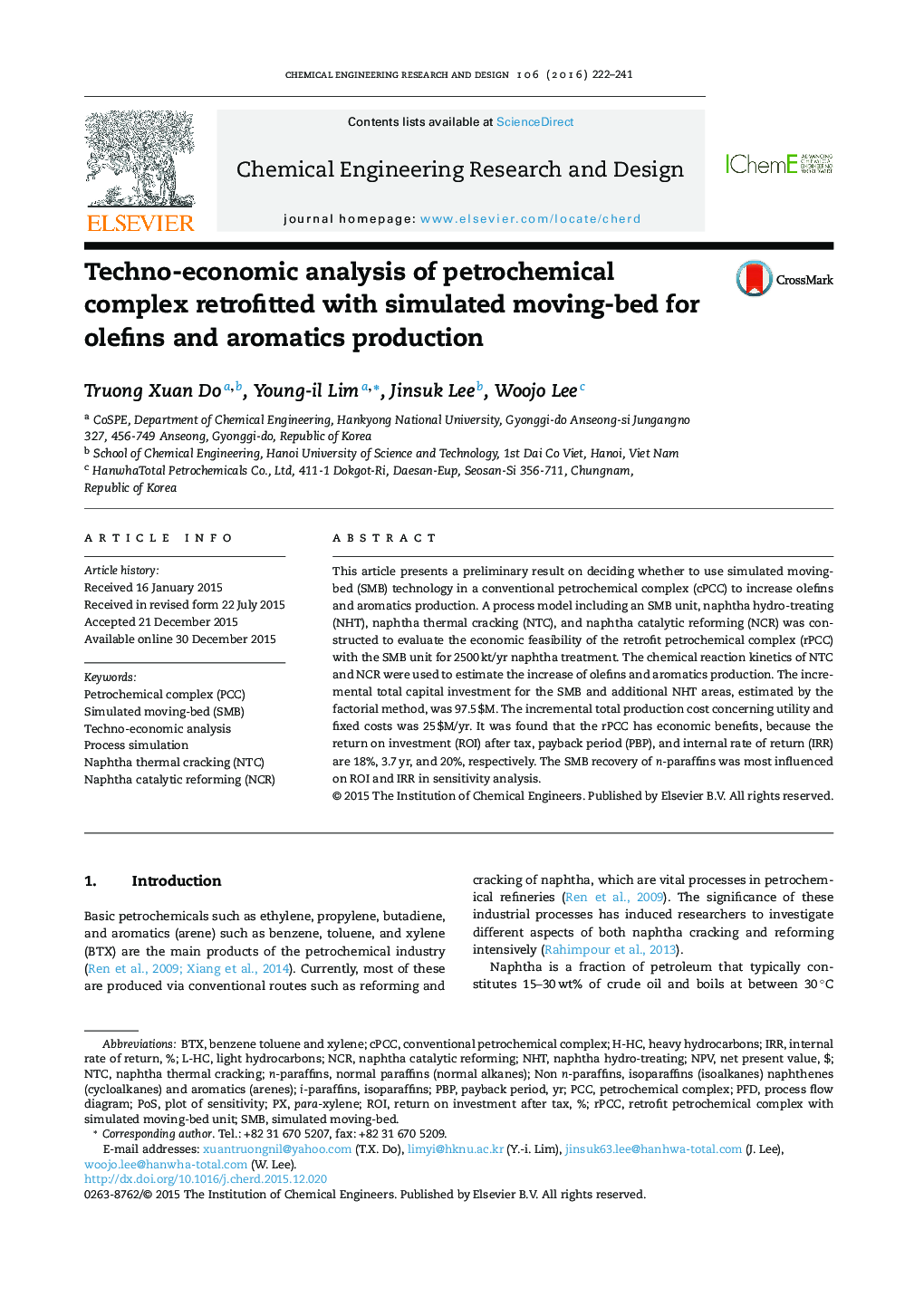| Article ID | Journal | Published Year | Pages | File Type |
|---|---|---|---|---|
| 620882 | Chemical Engineering Research and Design | 2016 | 20 Pages |
•A process model of a retrofit petrochemical complex with SMB unit was developed.•Reaction kinetics of naphtha thermal cracking and catalytic reforming were used.•ROI after tax and IRR of the retrofit project were 18% and 20%, respectively.•SMB recovery, products price, and total capital had a major impact on ROI and IRR.
This article presents a preliminary result on deciding whether to use simulated moving-bed (SMB) technology in a conventional petrochemical complex (cPCC) to increase olefins and aromatics production. A process model including an SMB unit, naphtha hydro-treating (NHT), naphtha thermal cracking (NTC), and naphtha catalytic reforming (NCR) was constructed to evaluate the economic feasibility of the retrofit petrochemical complex (rPCC) with the SMB unit for 2500 kt/yr naphtha treatment. The chemical reaction kinetics of NTC and NCR were used to estimate the increase of olefins and aromatics production. The incremental total capital investment for the SMB and additional NHT areas, estimated by the factorial method, was 97.5 $M. The incremental total production cost concerning utility and fixed costs was 25 $M/yr. It was found that the rPCC has economic benefits, because the return on investment (ROI) after tax, payback period (PBP), and internal rate of return (IRR) are 18%, 3.7 yr, and 20%, respectively. The SMB recovery of n-paraffins was most influenced on ROI and IRR in sensitivity analysis.
Graphical abstractFigure optionsDownload full-size imageDownload high-quality image (128 K)Download as PowerPoint slide
